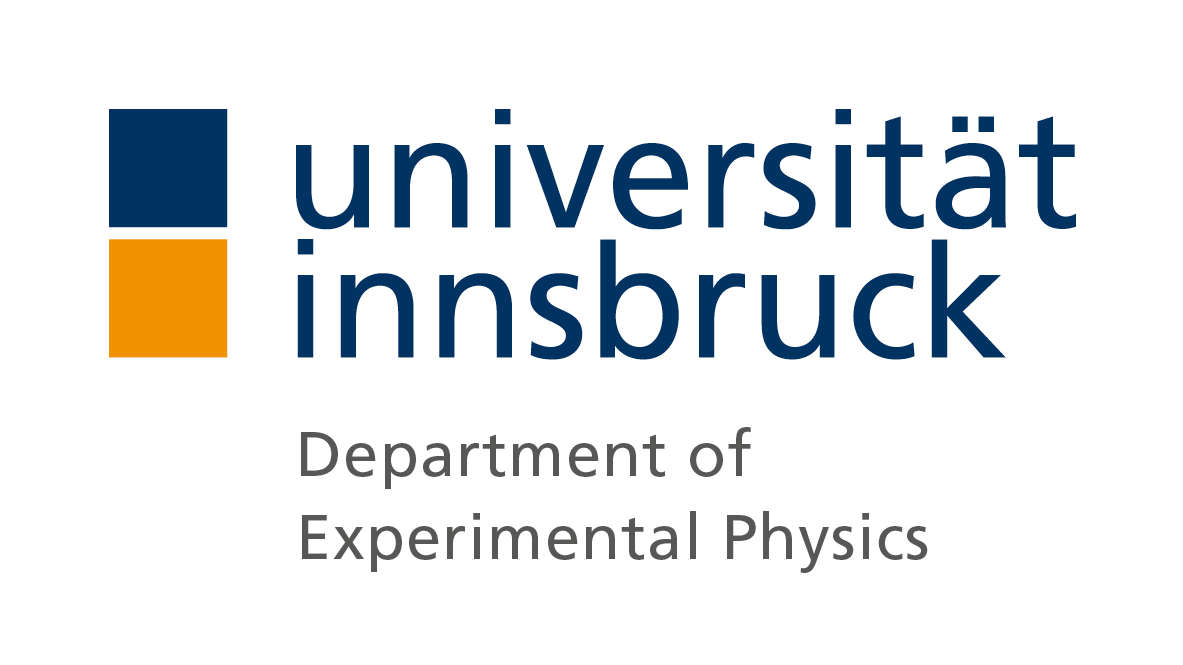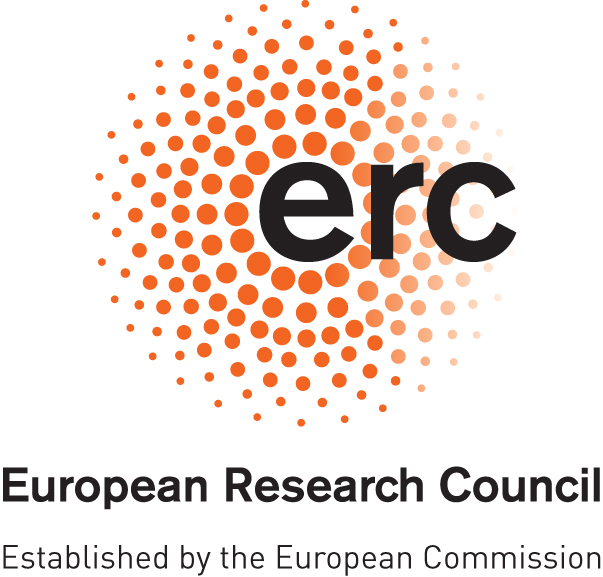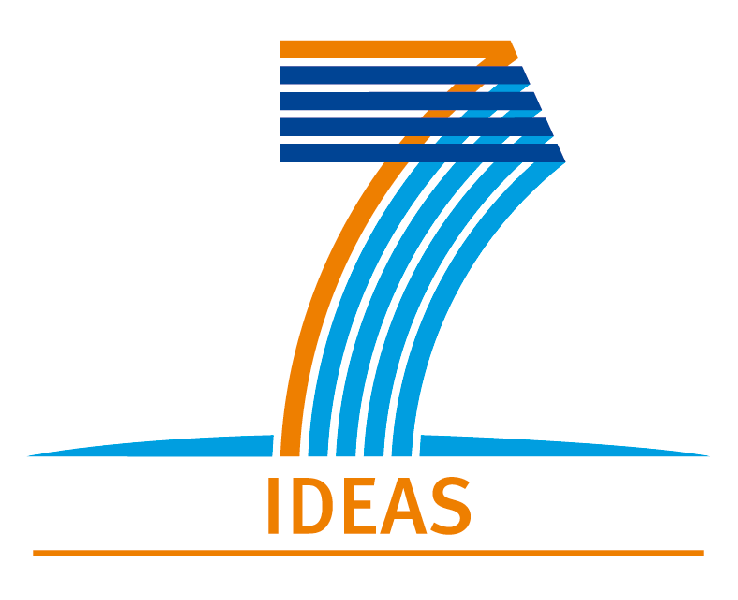Trapped Strontium Rydberg Ions (QuaSIRIO)
Realization of Trapped Strontium Rydberg Ions (QuaSIRIO)
Note: The Rydberg Ions Experiment has moved to the Stockholm University.
In this project we focus on the realization of trapped Rydberg ions. This will bring together two quantum systems: trapped ions and Rydberg atoms. Joining them will form a novel quantum system with advantages from both sides. Trapped Rydberg ions are a promising system for applications in quantum information processing and quantum simulation.
What are trapped Rydberg ions?
Rydberg ions are orders of magnitude bigger than normal ions. They possess an outermost electron which resides far away from the atomic core so that it is almost not trapped anymore. The picture below demonstrates the dimension of a Rydberg ion with respect to other important dimensions in an ion trap. The size of a Rydberg ion can be bigger than its localization inside the trap, but will still be smaller than the typical ion-ion distance. The resulting physical properties make trapped Rydberg ions a promising system for quantum information processing. For instance, due to their size they should be able to sense other Rydberg ions across distances of several micrometers which would enable fast quantum operations.
 Comparison of the relevant dimensions of trapped Rydberg ions from smallest to largest. An ion is smaller than a nanometer, however, in an ion trap it is only localized to about 30 nm. The size of a trapped Rydberg ion can be as large as 0.5 µm, as the orbital of the outermost electron lies far away from the core. The distance between trapped ions is typically about 5 µm, so that the Rydberg ions will be clearly separated in the trap, thus can be individually manipulated by laser pulses.
Comparison of the relevant dimensions of trapped Rydberg ions from smallest to largest. An ion is smaller than a nanometer, however, in an ion trap it is only localized to about 30 nm. The size of a trapped Rydberg ion can be as large as 0.5 µm, as the orbital of the outermost electron lies far away from the core. The distance between trapped ions is typically about 5 µm, so that the Rydberg ions will be clearly separated in the trap, thus can be individually manipulated by laser pulses.
What makes trapped Rydberg ions special?
Trapped Rydberg ions can form very large dipoles. For example, a microwave field driving transitions between Rydberg states can induce large oscillating dipoles. For the Rydberg state with quantum number n = 65 the oscillating dipole moment can reach up to 10000 Debye, while a diatomic molecule has typically 10 Debye and the oscillation of an ion in the trap usually is about 300 Debye (in SI units: 1 debye = 3.3×10−30 C m). Two oscillating dipoles next to each other can repel or attract each other. Neighboring Rydberg ions with large oscillating dipoles will therefore sense each other more strongly than this is the case for two oscillating ions.
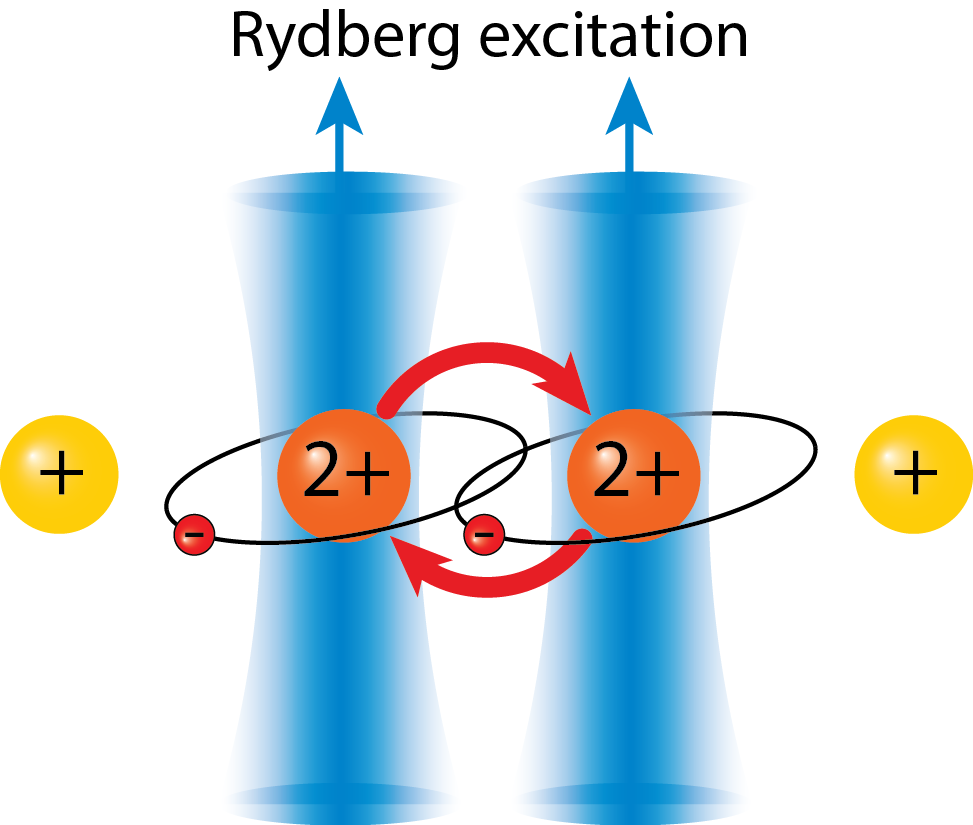 Scheme illustrating the Rydberg interaction in a linear ion string: Two neighboring ions in the Rydberg state can exchange energy via a dipole-dipole interaction.
Scheme illustrating the Rydberg interaction in a linear ion string: Two neighboring ions in the Rydberg state can exchange energy via a dipole-dipole interaction.
How to use such a system of trapped Rydberg ions?
Ions are trapped by static and oscillating electric fields. Coulomb repulsion of the charged particles results in a linear chain of ions separated by 5 µm. This separation allows each ion to be individually addressed by laser beams. The electronic states of the ion can be used to store quantum bits (qubits): for instance the electronic ground state S1/2 can be defined as state 1, and the metastable state D5/2 as state 0. Single qubit rotations are carried out by driving the electronic transition with a laser.
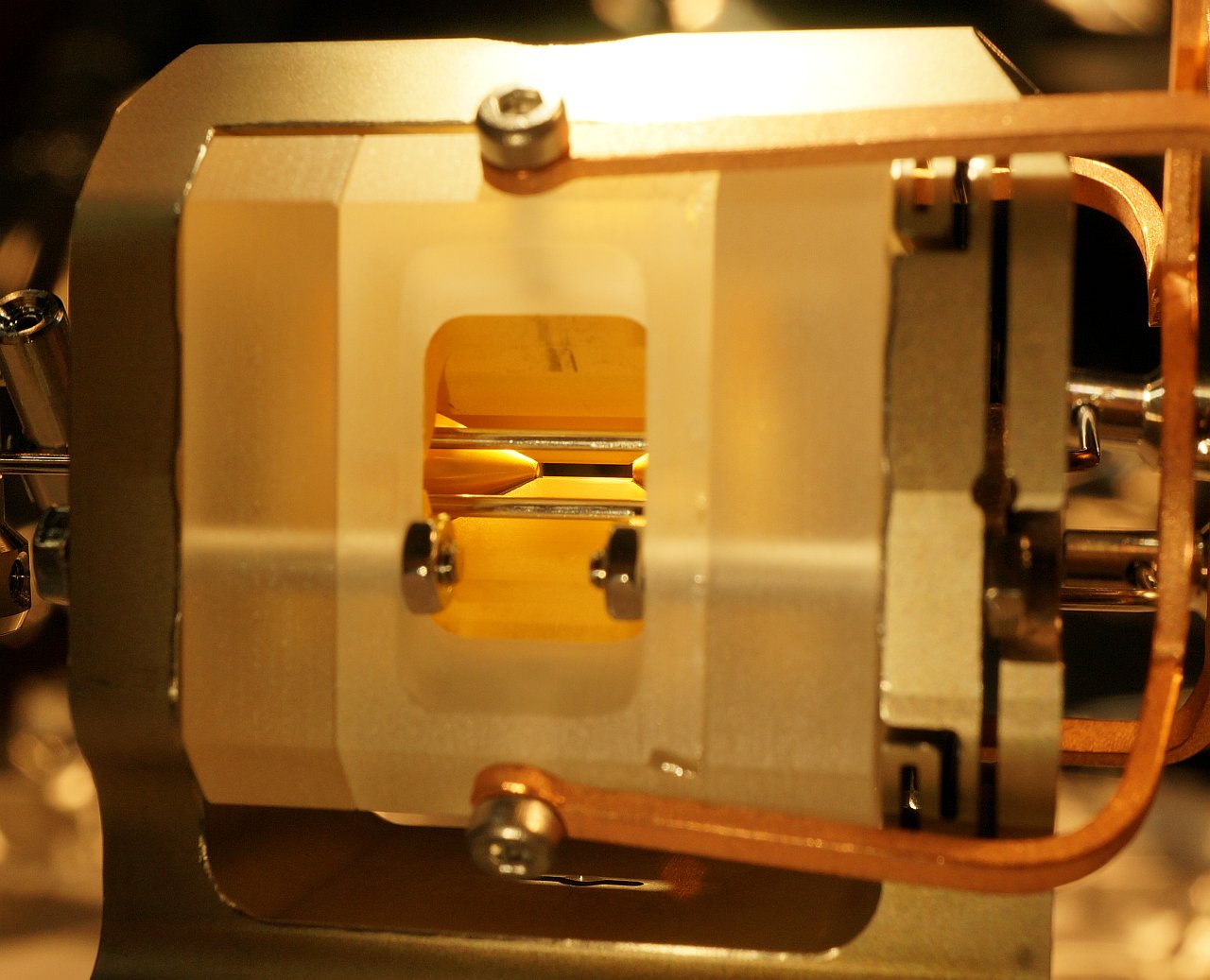
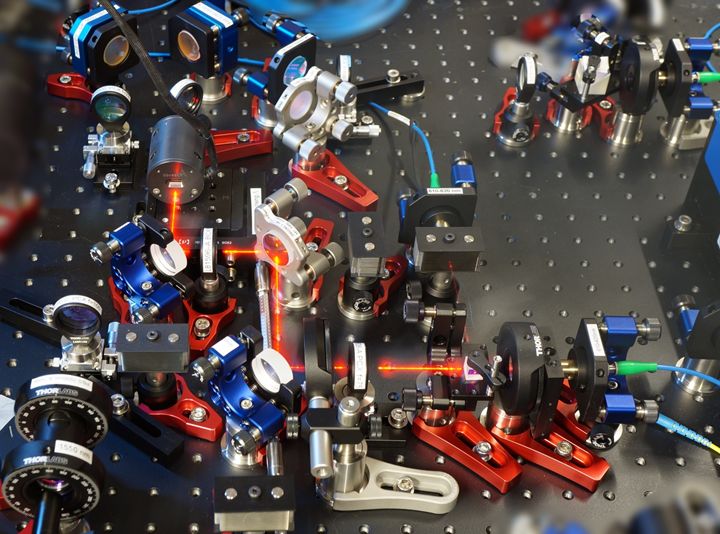
Left: View into a linear ion trap. A string of ions can be trapped in the center by applying static and oscillating voltages to the electrodes. Right: Setup for sum frequency generation of 612 nm laser light. The light is then frequency doubled to 306 nm for the second step of the Rydberg excitation.
We plan to generate Rydberg ions by exciting a normal trapped ion into the Rydberg state. A laser can bring the outermost electron from the ground state into the Rydberg state. Unfortunately, for ions the outermost electron is were tightly bound so that it takes a lot of energy to induce the transition from the ground state to the Rydberg state. For example, for strontium ions this requires a laser with a wavelength of 112.4 nm. Such ultraviolet light is very difficult to generate and is immediately absorbed by air. We therefore chose to use two lasers where the first laser excites an intermediate state (wavelength of 242.6 nm from 4D5/2 to 6P3/2) before the second laser finally reaches the Rydberg states (wavelength 304 - 309 nm from 6P3/2 to nS or nD Rydberg states with n = 30 - infinity). We are currently setting up an experimental system for exciting trapped strontium ions to the Rydberg state. Note that a similar experimental system is currently being set up in Mainz.
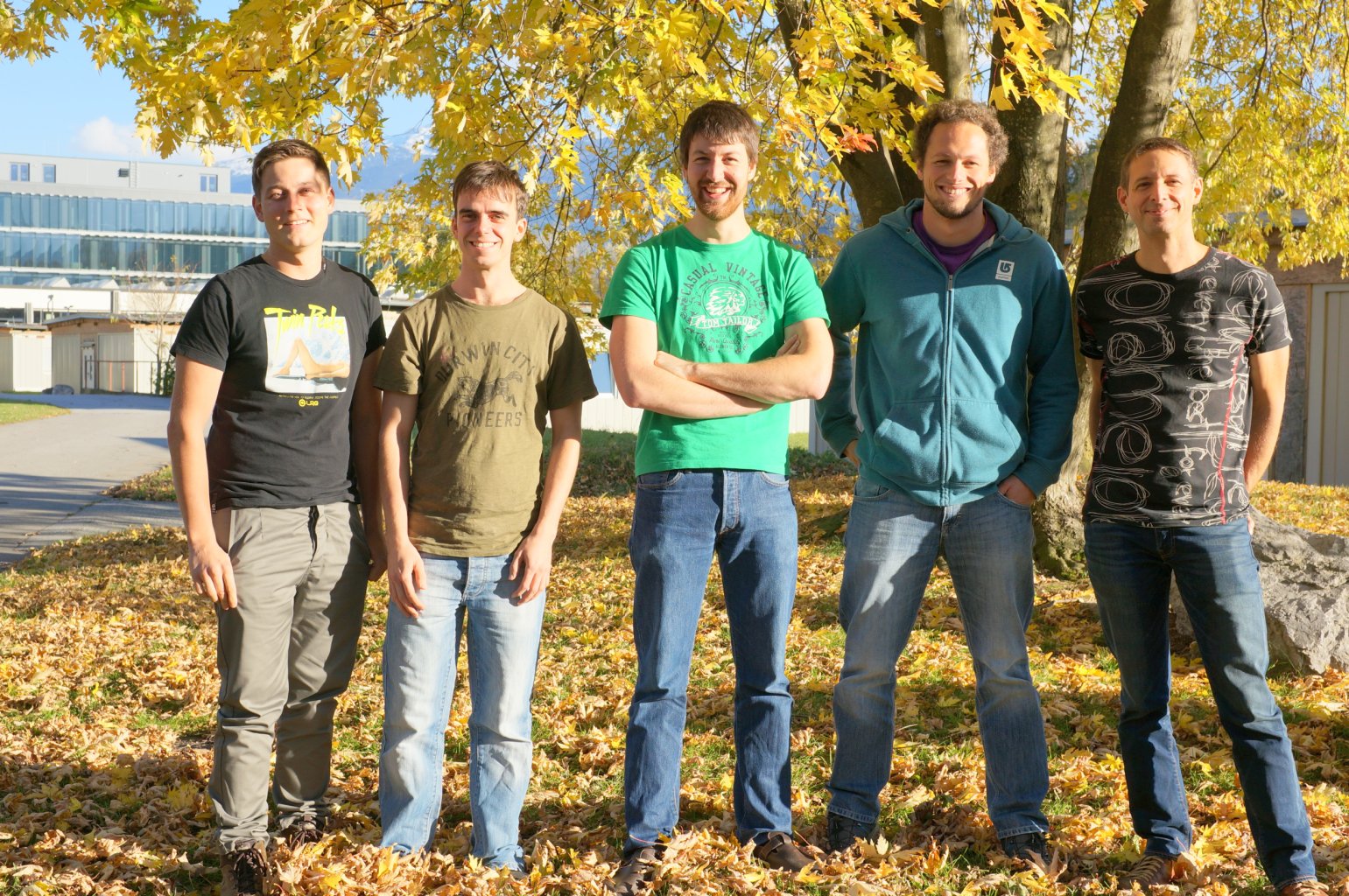 Team working on the Rydberg project in 2014.
Team working on the Rydberg project in 2014.
Project members
Johannes Haag
Markus Hennrich
Former members
Guillaume Coppola
References
[1] M. Müller et al., Trapped Rydberg ions: from spin chains to fast quantum gates, New J. Phys. 10, 093009 (2008).
[2] F. Schmidt-Kaler et al., Rydberg excitation of trapped cold ions: a detailed case study, New J. Phys. 13, 075014 (2011).
[3] W. Li and I. Lesanovsky, Entangling quantum gate in trapped ions via Rydberg blockade, Appl. Phys. B 114, 37 (2014).
[4] M. Saffman, T.G. Walker, K. Molmer, Quantum information with Rydberg atoms, Rev. Mod. Phys. 82, 2313 (2010).
[5] W. Li et al., Parallel execution of quantum gates in a long linear ion chain via Rydberg mode shaping, Phys. Rev. A 87, 052304 (2013).
[6] L. Isenhower et al., Demonstration of a Neutral Atom Controlled-NOT Quantum Gate, Phys. Rev. Lett. 104, 010503 (2010).
[7] T. Wilk et al., Entanglement of Two Individual Neutral Atoms Using Rydberg Blockade, Phys. Rev. Lett. 104, 010502 (2010).
[8] D. Jaksch et al., Fast quantum gates for neutral atoms, Phys. Rev. Lett. 85, 2208 (2000).
Links
Research on trapped Rydberg ions
CHIST-ERA project:Rydberg excited Calcium Ions for Quantum Interactions R-ION (I. Lesanovsky, F. Schmidt-Kaler, J. Walz, P. Zoller).
Theory on trapped Rydberg ions in Nottingham (I. Lesanovsky).
Theory on trapped Rydberg ions in Innsbruck (P. Zoller).
Trapped Rydberg Ca+ ions project in Mainz (F. Schmidt-Kaler and J. Walz).
Quantum information experiments with single neutral Rydberg atoms
M. Saffman group, Madison, Wisconsin.
P. Grangier & A. Browaeys, Institut d'optique, Orsay, France.
Funding
The project is funded by the ERC starting grant "Quantum Simulations with trapped Rydberg ions - QuaSIRIO" by the European Union (2011).
The Trapped Strontium Rydberg Ions experiment has moved to the Stockholm University, Sweden.
